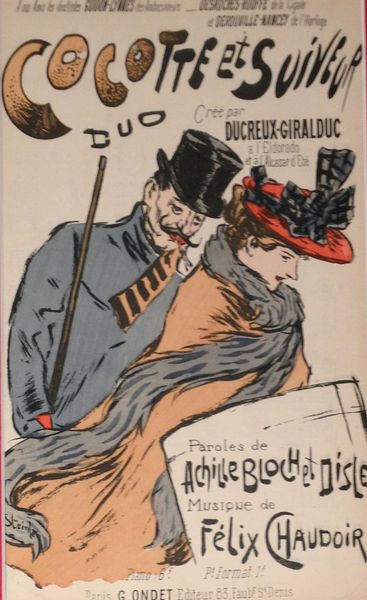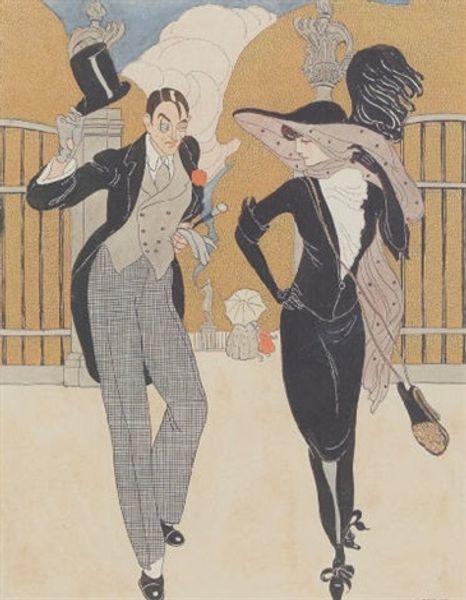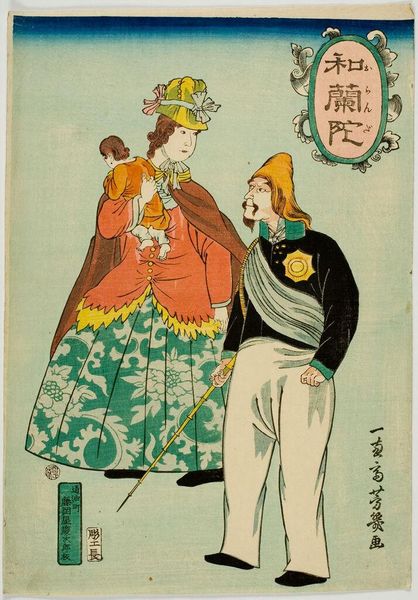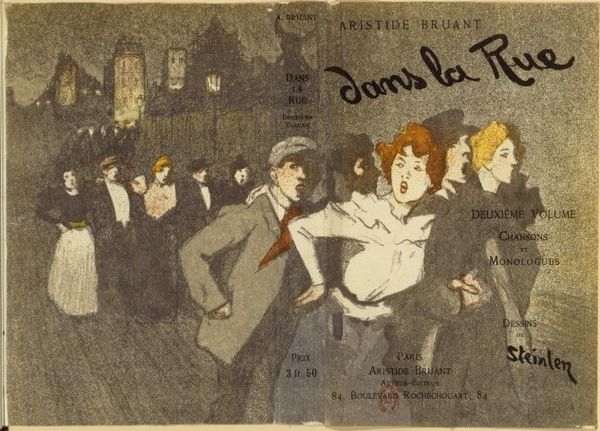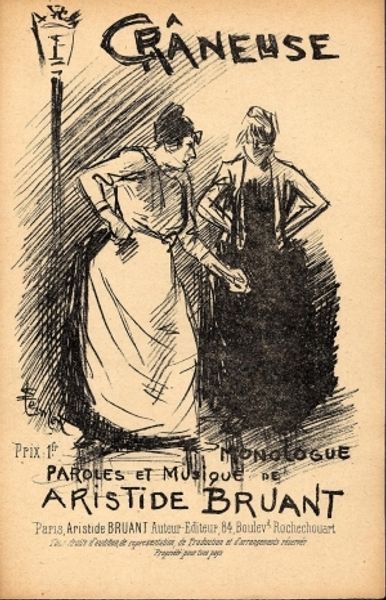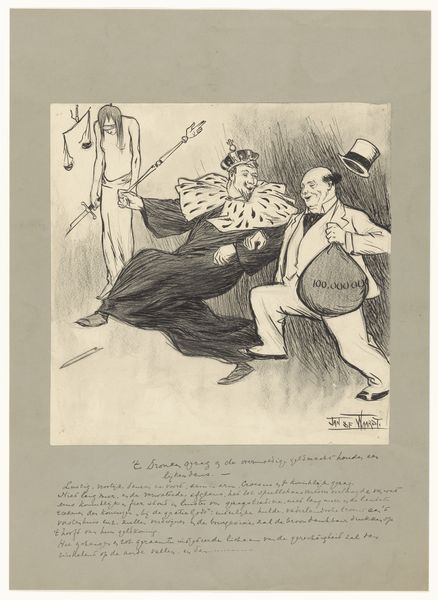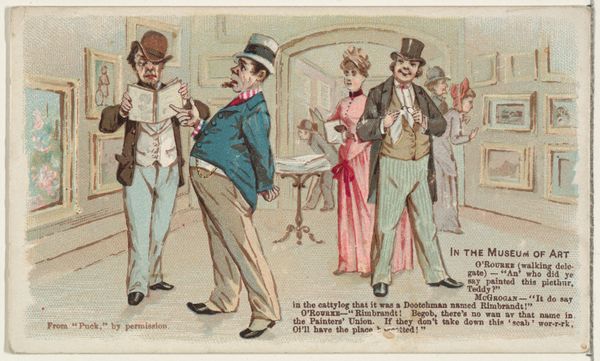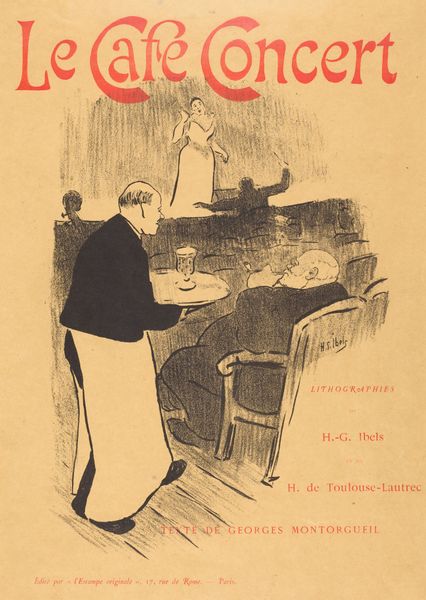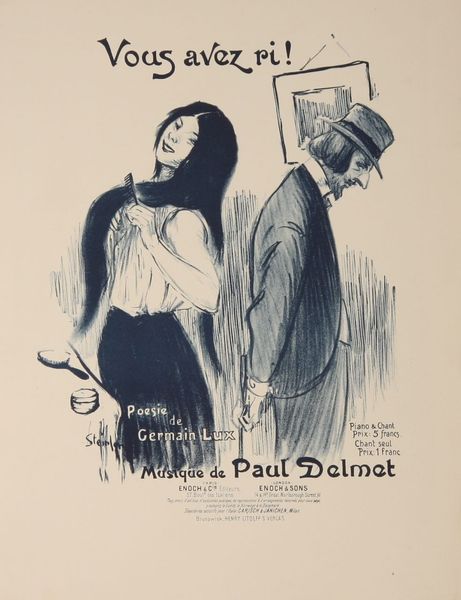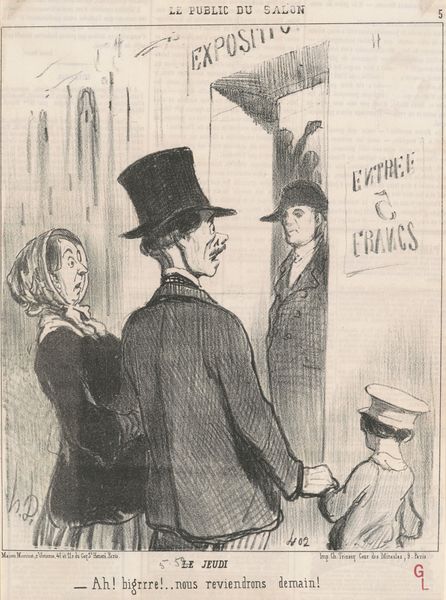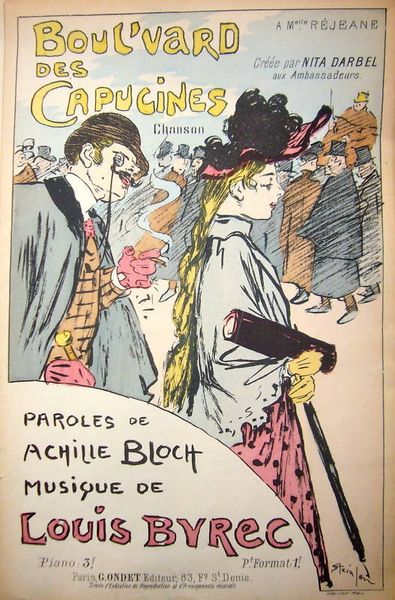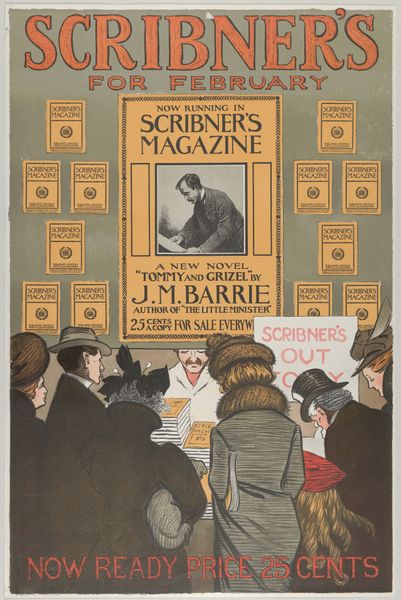
graphic-art, print, poster
#
graphic-art
#
art-nouveau
#
narrative-art
#
poster art
# print
#
caricature
#
caricature
#
poster
Copyright: Public domain
Editor: This lithograph poster, "Les Mysteres de la Tour Pointue" from 1899, by Théophile Alexandre Steinlen, is striking. The dramatic scene and the garish coloration give it a very pulpy, theatrical feel. What are your thoughts on how the piece captures its cultural milieu? Curator: Well, first off, "pulp" is an interesting word choice here because it ties it immediately to the context of mass media culture. Steinlen isn’t just making art; he’s participating in the growth of the popular press. These sensational stories – "Mysteries of the Pointed Tower"– were feeding a growing appetite for crime and intrigue among a newly literate public. Editor: I see. It’s advertising the story, but also sort of *is* the story in its own way. Curator: Precisely! It uses caricature to comment on the power dynamics present at the fin de siècle, from the struggling bourgeoisie, to law enforcement. But who are these "mysteries" really serving? Does this proliferation of crime narratives affect our sense of security, perhaps to justify increased surveillance? Editor: That's a point I hadn’t considered. By sensationalizing crime, maybe they were normalizing more intrusive police power. Curator: It makes you wonder, doesn’t it? The poster itself becomes a site of contestation, reflecting and perhaps even reinforcing societal power structures through spectacle and anxiety. Editor: I will never see poster art quite the same way. It’s amazing to see how seemingly simple illustrations can unpack such complex issues of class, power, and gender. Curator: It demonstrates the exciting interconnections between visual culture and social change.
Comments
No comments
Be the first to comment and join the conversation on the ultimate creative platform.
